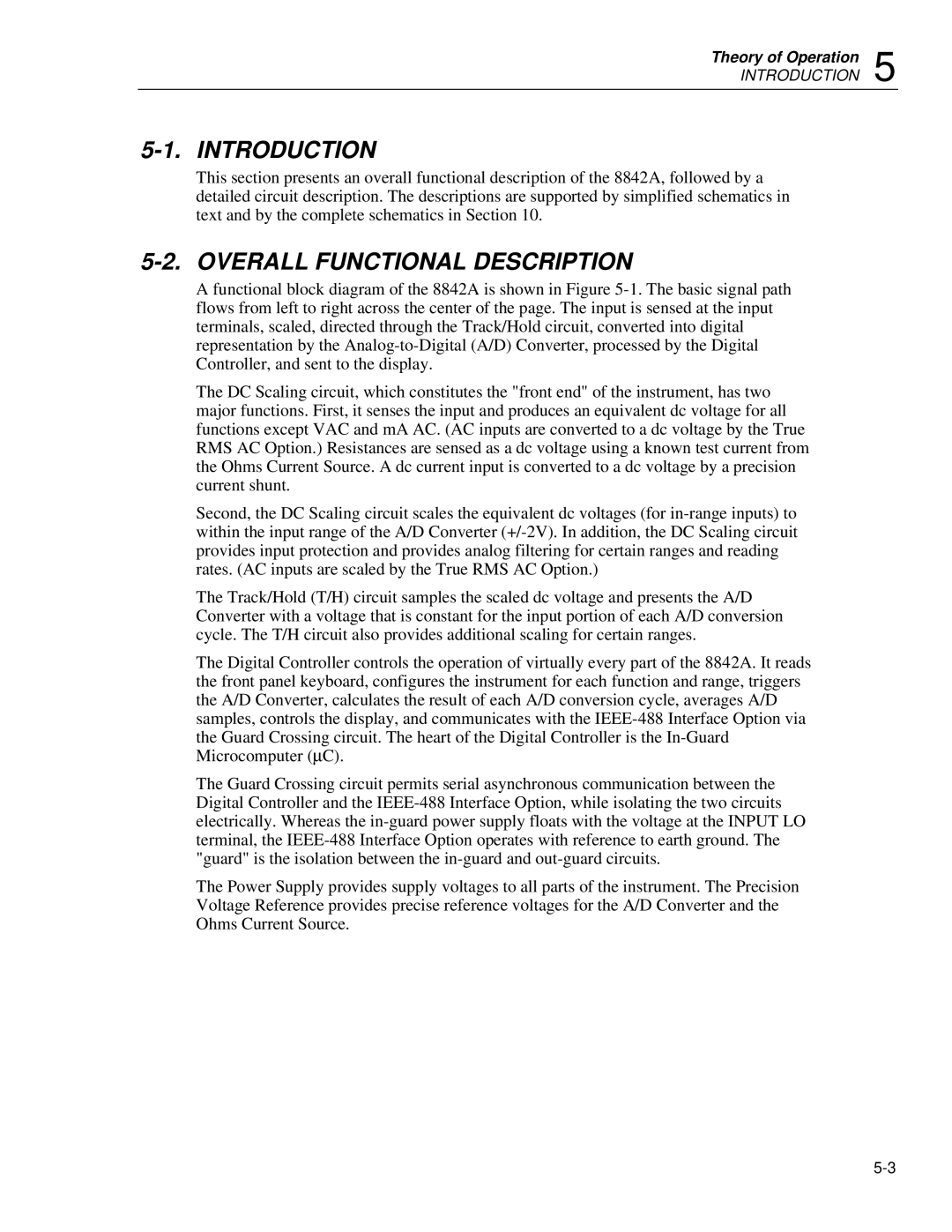Theory of Operation 5
INTRODUCTION
5-1. INTRODUCTION
This section presents an overall functional description of the 8842A, followed by a detailed circuit description. The descriptions are supported by simplified schematics in text and by the complete schematics in Section 10.
5-2. OVERALL FUNCTIONAL DESCRIPTION
A functional block diagram of the 8842A is shown in Figure
The DC Scaling circuit, which constitutes the "front end" of the instrument, has two major functions. First, it senses the input and produces an equivalent dc voltage for all functions except VAC and mA AC. (AC inputs are converted to a dc voltage by the True RMS AC Option.) Resistances are sensed as a dc voltage using a known test current from the Ohms Current Source. A dc current input is converted to a dc voltage by a precision current shunt.
Second, the DC Scaling circuit scales the equivalent dc voltages (for
The Track/Hold (T/H) circuit samples the scaled dc voltage and presents the A/D Converter with a voltage that is constant for the input portion of each A/D conversion cycle. The T/H circuit also provides additional scaling for certain ranges.
The Digital Controller controls the operation of virtually every part of the 8842A. It reads the front panel keyboard, configures the instrument for each function and range, triggers the A/D Converter, calculates the result of each A/D conversion cycle, averages A/D samples, controls the display, and communicates with the
The Guard Crossing circuit permits serial asynchronous communication between the Digital Controller and the
The Power Supply provides supply voltages to all parts of the instrument. The Precision Voltage Reference provides precise reference voltages for the A/D Converter and the Ohms Current Source.
